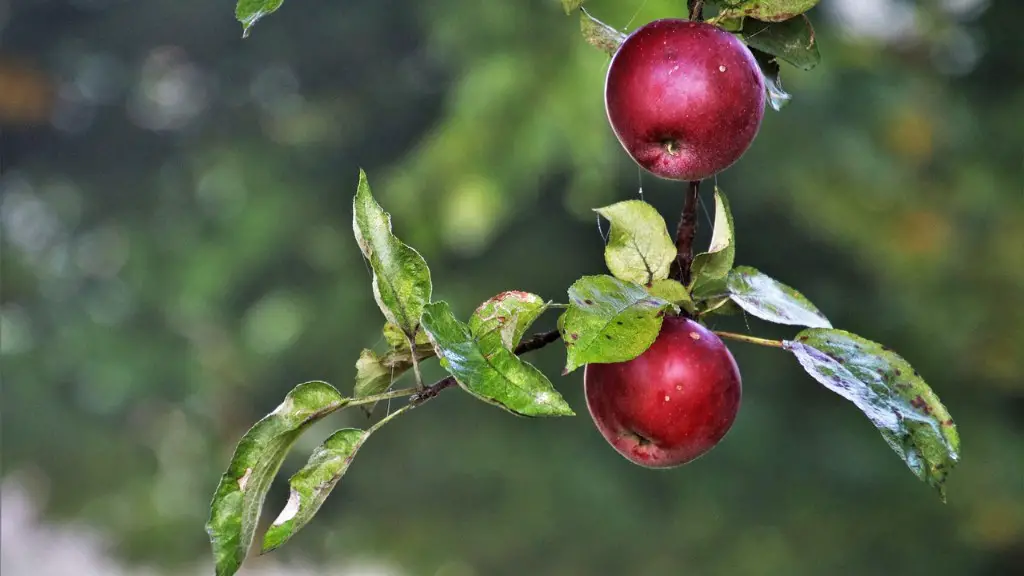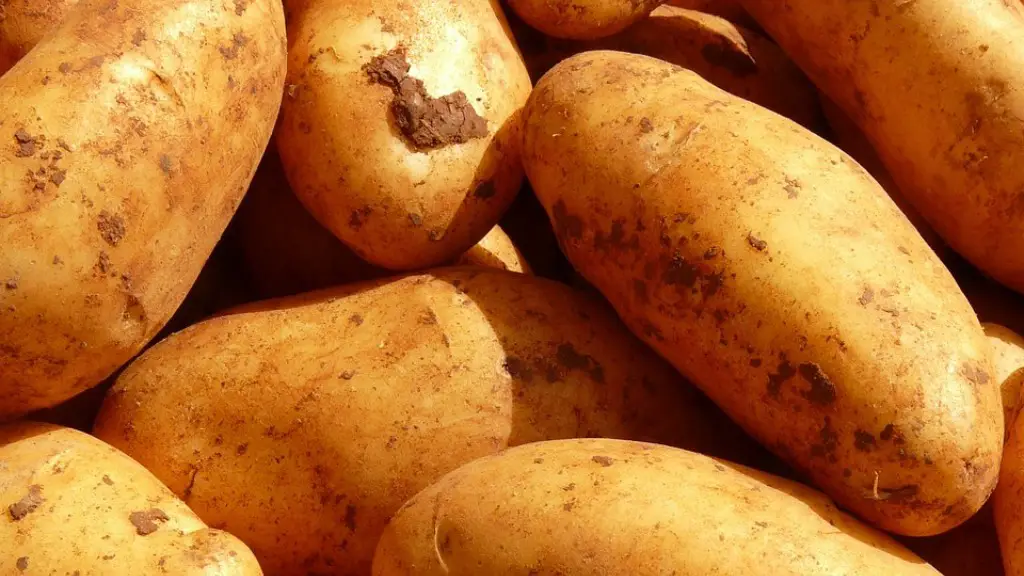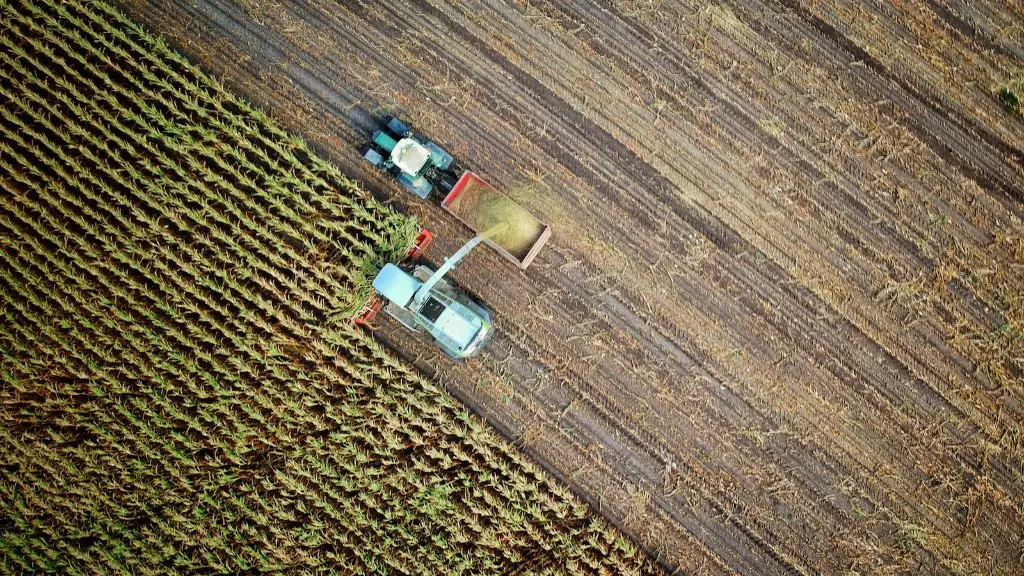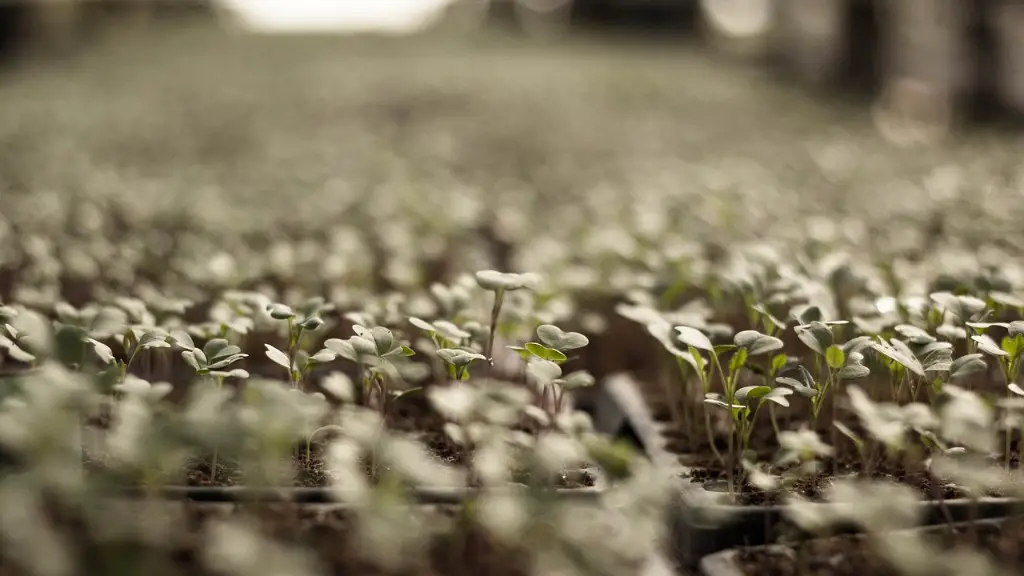Modern agriculture began to take shape in the Neolithic Era, which is characterized by a gradual transition from hunting and gathering to the domestication of plants and animals. Humans began to cultivate wild plants and herd animals for food, fabric, and other materials around 10,000 B.C.E. The introduction of domesticated plants and animals made available more food resources, which allowed early humans to settle down and form permanent communities. This marked the beginning of the agricultural revolution. As these communities grew, they developed more complex tools, techniques and knowledge of animal husbandry and crop cultivation.
The early Neolithic farmers practiced mixed crop and animal agriculture, herding animals such as sheep and goats, pigs and chickens, and growing crops like wheat, barley, and vegetables. Animal manure was used to fertilize the soil for growing crops and for keeping the land fertile. The use of irrigation in farming was also adopted early on in this period.
The Middle Ages saw the emergence of crop rotation, which was a major shift in agricultural practice. It was an important innovation because it allowed farmers to cultivate the same land year after year without damaging the soil’s fertility. Other important developments during this period included the introduction of iron tools, the use of windmills to mill grains, and the development of new farming implements such as the plow.
By the 18th century the Industrial Revolution had brought many changes to the way people lived and worked. This period also saw marked advances in agricultural technology, such as the invention of the threshing machine, the seed drill, and the reaper-binder. These inventions greatly increased the efficiency of crop production and led to larger yields. In addition, livestock began to be bred for specific traits, such as size, and there was an increased focus on crop rotation and soil conservation.
Today, modern agriculture is the result of centuries of change and advancement in farming practices. The use of advanced technologies such as biotechnology and precision farming has made food production more efficient and allowed for higher yields of food. In addition, advances in irrigation and fertilizers have improved crop yields and reduced the need for extra labor. Many of these advances have also helped to reduce environmental impact.
Agricultural Plants and Animals
Since the beginning of modern agriculture, humans have relied on the domestication of plants and animals. As early as 9500 B.C.E., humans began to cultivate and domesticate wild plants such as wheat, barley, and vegetables. In addition, they domesticated animals to provide food and other materials such as wool, milk, and transportation. Livestock represented a source of animal labor, clothing, and food. As civilizations developed, additional plants and animals were domesticated and bred for specific traits, such as size or behavior.
Animals provided an important source of food, labor, and materials for clothing and shelter. They were also essential in transporting and storing goods. As early as 5000 B.C.E., horses, oxen, and mules were used for plowing fields and transporting goods. The domestication of animals represented an important milestone in the development of modern agriculture.
In addition to domesticated animals, early farmers also used wild animals as a source of food. Fish, birds, and shellfish were also an important source of nutrition. Wild game, such as deer, boar, and rabbits, were also hunted to provide a valuable source of food and materials. The introduction of different kinds of animals into the Agricultural Revolution allowed for more diverse crops and greater yields.
Agricultural Tools and Technology
As civilizations developed, they began to use tools and technologies to advance their farming practices. The use of iron tools, such as plows and hoes, marked an important transition from stone tools, which were used in the earliest farming communities. In addition, grain was ground into flour using hand-operated stone or wooden grinders, and animals were harnessed for transportation.
Early technologies such as the seed drill and threshing machines, allowed for larger yields of grain. The invention of the seed drill allowed for more precise planting, while the threshing machine made harvesting easier and more efficient. The 19th century saw the invention of the reaper-binder, which bound together cut hay and grain stalks for storage. This invention allowed for increased efficiency in grain harvesting and storage.
The use of windmills, which harnessed the power of the wind to mill grains into flour, was also of hight importance during this period. In addition, advances in transportation and communication, such as railroads and telegraphs, allowed for the more efficient distribution of goods and knowledge.
The emergence of modern biotechnology in the late 20th century has enabled drastic advances in the use of genetic engineering to create drought-resistant crops and increased bacterial productivity. In addition, precision farming has allowed for more precise management of agricultural inputs such as irrigation and fertilizer.
Soil Conservation and Management
In addition to advancements in crop cultivation and harvesting, farmers have also developed strategies for conserving soil quality and fertility. Crop rotation is one of the oldest methods of soil conservation and is still used today. By planting different crops in each season, the soil is kept in a healthy, nutrient-rich state. Other soil conservation methods include terracing, which reduces water runoff, and using cover crops and green manures to increase soil fertility.
In addition, farmers have developed methods of nitrogen fixation and irrigation to improve crop yields. Nitrogen fixation is the process of transforming nitrogen gas into usable forms of nitrogen for plant growth. Irrigation is the process of providing water to crops through artificial means, such as wells or sprinklers. By conserving soil fertility and providing an adequate water supply, farmers are able to optimize their land and improve yields.
The introduction of modern fertilizers and GM crops has also made it possible to grow crops in harsher climates and make use of depleted soils. Fertilizers provide essential nutrients for plants, while genetically modified crops have been modified to resist pests and weather extremes. These advances have allowed for increased yields in areas that were once considered unproductive.
Agricultural Policies and Regulations
Agricultural policy and regulations have played an important role in the development of modern agriculture. Regulations can provide incentives for farmers to use more efficient farming methods, provide financial support for agricultural research, and control the cultivation of certain crops. In addition, regulations can protect farmlands by limiting the amount of development on agricultural land.
Government regulations can also help to protect the environment and provide food security. Many governments have implemented policies to reduce the environmental impact of agriculture, including laws regulating the use of chemical pesticides and fertilizers. Regulations can also encourage sustainable production methods, such as organic farming, which does not rely on the use of chemical inputs.
In addition, governments can also provide financial incentives for farmers to adopt certain practices. Government subsidies are often used to encourage farmers to increase production, improve crop yields, and conserve soil quality. These subsidies can help to ensure that farmers are able to produce enough food to meet the needs of their local communities.
In addition to government regulations, other organizations, such as non-governmental organizations, can also play an important role in modern agriculture. These organizations can provide financial and technical assistance to farmers in developing countries, helping them to produce food more efficiently and sustainably.




